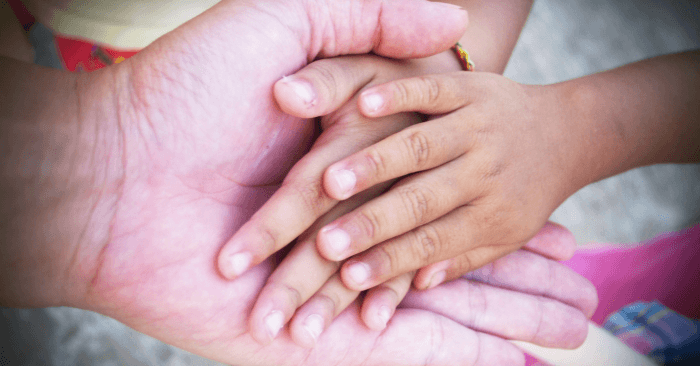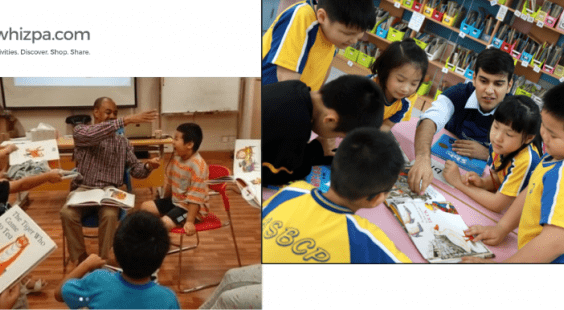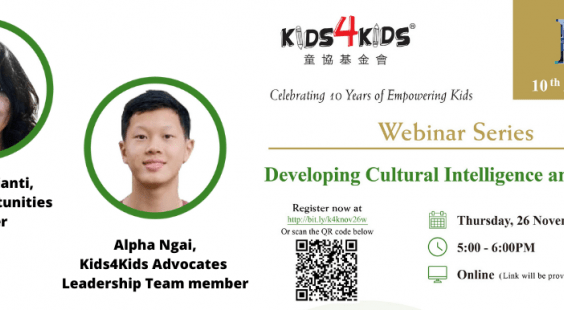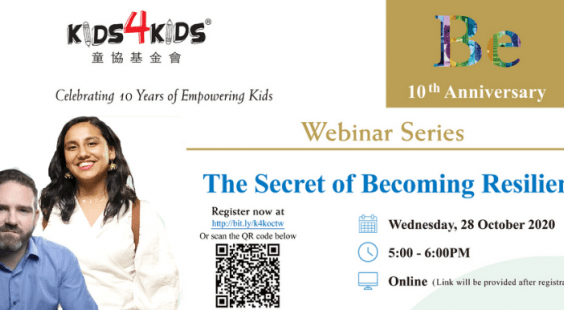
培養孩子參與志願服務
There are many cases that have shown how incorporating volunteering activities into kids’ schedules can bring them an immeasurable amount of joy and teach them invaluable lessons that will help them become successful adults. We may be fully aware of the benefits of volunteering, but how should parents and kids actually get started with volunteering?
Help children understand the value of volunteering
Although parents might be aware of the benefits of volunteering, we must help children themselves better understand such benefits as well. Since volunteering is an activity for which children must set aside time in their busy schedules, parents should help children understand the value of volunteering in an easily understandable manner. Pia Wong from Bring Me a Book suggests using stories and videos to help children visualize the benefits of volunteering. “A good story or video speaks a thousand words. Parents can consider showing kids stories or videos on how volunteers can really help beneficiaries. Storybooks and videos can explain abstract ideas well. I once explained to some kids the significance of marine preservation services by telling a story of a fish being ill from eating rubbish dumped by irresponsible people. It was very thought-provoking for them.”
(Source: Kids4Kids)
“As long as children see the impact of their work, they will find it rewarding. This will, in turn, motivate them to continue volunteering” says Michele Lai of Kids4Kids. “Children can start from small projects just to get the first taste. Children can, for example, just read their favorite storybook to other children in the Buddy Reading Program. When the storyteller sees the faces of their listeners, they will immediately understand how a single story can brighten a child’s day.” Michele further points out that seeing the feedback of the beneficiaries through simple direct engagement can already help children understand the value of volunteering.
After understanding the value of volunteering, Pia believes that it is important to make volunteering a priority. Parents can think of stimulating ways to help children habitually think of what they can do for others. “Every night, my husband and I will ask our children about the Rose, the Storm, and the Sprout of the day. The Rose is something good that happened to them, while the Storm is something bad. The Sprout is the key that carries the altruistic spirit, symbolizing something that someone did for ourselves or something we did for others. We must think about the blessing for others to make a positive impact in our life, and also what we could have done for others.” Pia suggests prompting children to think about the good deeds they have received or can do every day.
When should kids start volunteering?
Michele and Pia both believe that the earlier a child starts volunteering, the better. Because volunteering often involves projects that are best sustained for a period of time in order to maximize engagement with the beneficiaries, children should try to get into the habit of routinely making time for volunteering. “Children start as early as Primary 1 to form a good habit” says Pia. Although children in Primary 1 may not be able to participate in substantial projects, they can participate in small-scale projects just to start establishing a habit. In Michelle’s experience, “typically, children may start to initiate truly meaningful and engaging work at around Primary 5 or 6. But starting before primary 5 or 6 helps to establish a habit that will act as motivation for later projects”. She adds that starting to volunteer early on can expose children to a variety of causes. "This paves the way to help them identify the causes they feel most passionate about” she says.
(Source: Kids4Kids)
How can students balance volunteering and other commitments?
When children start getting engaged in volunteering activities, the question that often comes up is whether they will be able to balance their time commitment to volunteering with their school work and other extracurricular activities. School responsibilities are usually seen as a priority, and many parents wonder if long-term volunteering commitments will interfere with their children’s school responsibilities. “It is actually quite the reverse – volunteering helps with school work” says Michele. She has found that because children who volunteer are engaged in a meaningful way, they are usually motivated to manage their time well in order to make time for their volunteering activities. Pia points out that “in the process of volunteering, children gain a vast network of social support made up of altruistic and supportive children. This helps children establish social rapport, and helps make them more resilient when they face challenges at school.”
In order for voluntary projects to be truly impactful and engaging, how much time should children expect to dedicate to volunteering services? “In our buddy reading program, children typically spend 1.5-2 hours per week on planning and executing the projects” says Michele. According to Pia, “typically, 1 hour per week already makes a huge difference to the charity the children are helping.” Pia also advises that “parents should conduct some due diligence to make sure the charitable organisations they are interested in have proper project structures and systems for children to contribute their time in a systematic manner to best amplify the impact from their services.”
(Source: Bring Me A Book)
Where to start volunteering?
There are a plethora of charities that have flourished in Hong Kong thanks to the hard work of many philanthropists. These charities support a variety of good causes, and such variety makes it easy for children to choose a cause they empathize with. Besides Bring Me a Book and Kids4Kids, many other charities welcome kids’ involvement. These include arts and crafts charity Bizzie Bees, resource distribution NGO Crossroads Foundation, and interactive fundraising NGO Charitable Choice.
These charities make remarkable contributions in their own special ways. For example:
- Bizzie Bee has developed fun and educational arts and crafts kits to help children develop their creativity and fine motor skills. Money raised from the sale of these kits goes directly to arts projects for the underprivileged in the Hong Kong community. This collaborative approach ensures that their “wellness through art programme” reaches as many children and adults as possible.
- Crossroads Foundation serves to connect those in need with those who can provide assistance through a number of initiatives. Their Global Distribution program gathers high quality excess resources from individuals and businesses, and re-distributes them to those in need both in Hong Kong and internationally. Other Crossroads programs include Global Hands (a platform that connects donors with those in need all over the world), Global X-perience (simulations that let participants experience how other people have to deal with global challenges such as war and poverty) and Global Handicrafts (a marketplace that sells goods produced by people in need, under fair trade conditions) .
- Charitable Choice is an innovative charity platform that aims to make giving to charity a simple, fun and innovative process. The platform allows people to initiate fundraising projects or gift others with a charitable donation. For example, one way for children to get involved in charity could be for them to suggest that friends coming to their birthday party make a charitable donation through Charitable Choice in lieu of gifting them with a conventional birthday present. Donors and gift recipients can choose from more the 40 charities to support across a range of causes such as Animals & Environment, Arts & Education, Children & Elderly, Disability & Illness, and Poverty & Social Injustice. In this way, the platform can help children learn more about charities and gives them a chance to get actively involved.
There are many more charities that welcome children’s involvement. Parents can start by getting in touch with their favourite charity to see how they and their children can play a part. Michele believes that it is helpful to read reviews and get feedback on a certain organisation from past volunteers. “A good charity organisation not only aims to empower the beneficiaries, but is also dedicated to encouraging the growth of volunteers.”
Be sure to go to Whizpa.com for a comprehensive list of charitable organizations in Hong Kong and explore how you and your kids can contribute!








